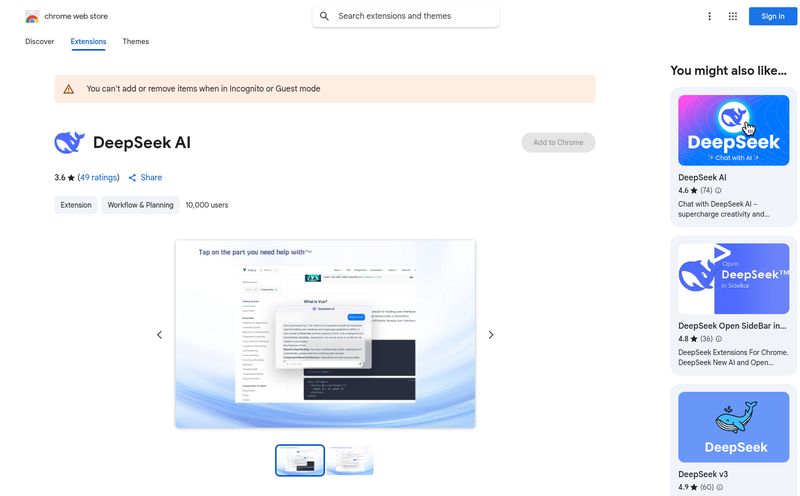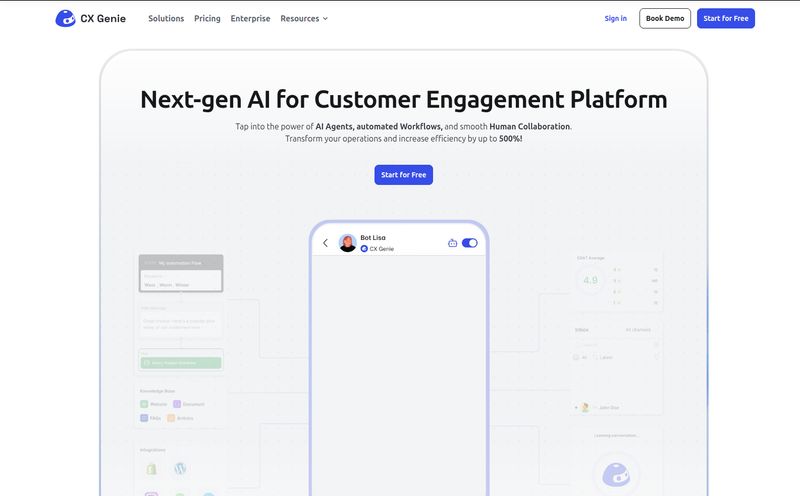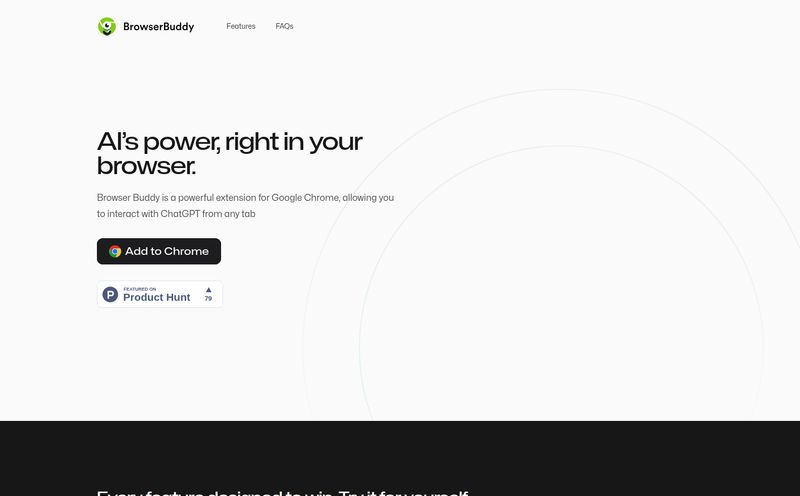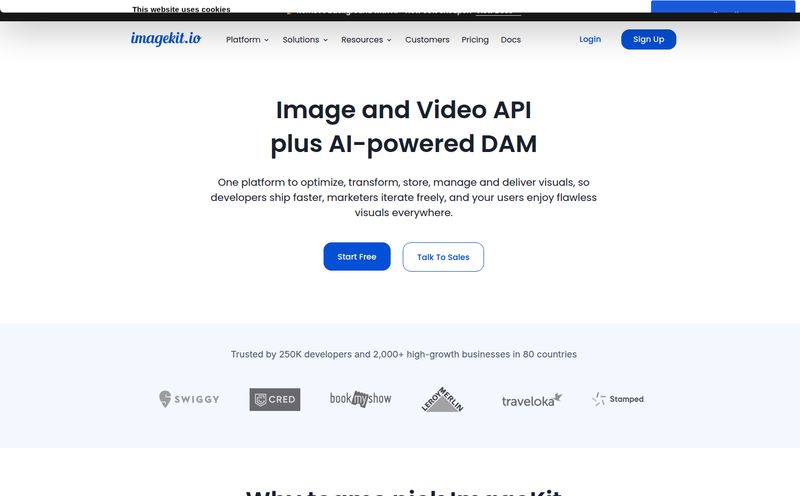Creating training content can be an absolute slog. If I have to sit through one more wobbly, poorly lit webcam video or a soulless screen recording with a monotone voiceover, I might just lose it. We've all been there, right? You spend days, sometimes weeks, filming, editing, and perfecting a single training module. Then, management wants it in Spanish. And German. And Japanese. Suddenly your quick project has ballooned into a monster that’s eating your entire quarter’s budget.
It's a familiar pain point in the L&D and corporate training world. For years, the trade-off has been between quality, speed, and cost. You could only ever pick two. But lately, a new wave of AI tools has been promising to let us have our cake and eat it too. I've been keeping a close eye on the AI video generation space, and while some of it feels a bit gimmicky, every now and then a platform pops up that genuinely makes me sit up and pay attention.
Enter Verbalia. Their homepage hit me with a pretty bold claim: "Transforming Digital Learning into an Experience." Okay, marketing speak, I get it. But as I dug in, I realized there might be some real substance behind the slogan. This isn't just another text-to-video generator; it’s purpose-built for creating e-learning content with digital instructors. So, is it the real deal or just another flash in the pan? I decided to find out.
So, What's the Big Deal with Verbalia?
At its core, Verbalia is an AI platform designed to create and translate videos featuring AI-powered instructors. Think of it as a digital studio, but instead of cameras, lights, and a nervous presenter, you have an algorithm ready to go. You give it a script and a picture, and it generates a video of a person speaking that script. Simple on the surface, but the implications are pretty huge.
What I found interesting is their two-pronged approach. They offer a straightforward, no-code platform that folks like me (and probably you) can use without having a meltdown. But they also have an API for the tech-savvy teams who want to integrate this functionality directly into their own systems or create content in bulk. This tells me they’re thinking about both the marketing manager who needs a one-off training video and the enterprise developer who needs to generate a thousand onboarding videos. Smart.
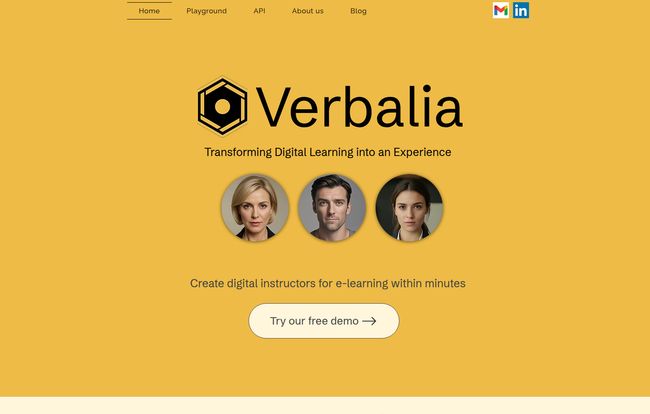
Visit Verbalia
The Core Features That Actually Matter
A platform is only as good as its features. Here’s what stood out to me from Verbalia's offerings.
Instant AI Instructors from a Single Photo
This is the headliner. The platform claims you can create a custom instructor from just one picture. This is a big departure from many competitors that rely on a library of stock avatars. The potential here is massive. You could create a digital twin of your company's CEO for company-wide announcements, or of your best sales trainer to create a library of sales enablement content. It's like giving your top expert a team of digital clones who can work 24/7 without ever needing a coffee break. The customization extends to backgrounds, too, so you can make it look like they’re in your office or a professional studio.
Breaking Down Language Barriers Effortlessly
Okay, this is where I really get excited. Verbalia supports multiple languages. This is a game-changer for any company operating on a global scale. The old way involved either hiring voice actors for dubbing (expensive and time-consuming) or using subtitles (less engaging). With Verbalia, you can seemingly take one video and have it delivered by the same instructor in French, Spanish, or whatever language your audience prefers. This preserves the continuity and brand identity of your training, which is a subtle but incredibly important detail.
Interactive Avatars That Do More Than Talk?
Now this was the bit that seemed different. The site mentions "Interactive avatars" that can "connect with the test of the video just like a teacher would do," and provide "real-time replies." I have to admit, my curiosity is piqued. This suggests something beyond a simple talking head video. It sounds like the avatar can react based on user input, perhaps in a quiz or an interactive module. If this works as described, it could seriously bump up learner engagement. It moves the tech from a passive viewing experience to an active learning one. I haven’t seen this executed well on many platforms, so I’m cautiously optimistic here.
Who Is This Tool Really Built For?
Based on their own use cases and my experience in the industry, I can see a few key groups getting a ton of value from a tool like Verbalia.
- Corporate Learning & Development (L&D) Teams: This is the bread and butter. Think about onboarding new hires, rolling out compliance training, or upskilling your existing workforce. The ability to quickly create and update content is a massive win.
- Sales Enablement and Customer Success: Imagine creating personalized video tutorials for new customers or quick, digestible sales training clips for your team. This is a fantastic way to scale knowledge without tying up your best people in repetitive training sessions.
- Educational Institutions: For making lessons more accessible and engaging. An AI instructor can help retain attention better than a wall of text, especially for younger learners or those with different learning styles.
Honestly, any organization that relies on video for training or communication could probably find a use for it. The main benefit isn't just making a video; it's the speed and scalability that's so attractive.
The Million-Dollar Question: What's the Price Tag?
Ah, the part you've all been waiting for. I clicked around, eager to find a pricing page to see if this was a tool for the masses or just for the big corporations. And what did I find? A big, bold 404 Page Not Found.
In the world of SaaS, this usually means one thing: custom, enterprise-level pricing. They don't list their prices because they want to talk to you first. You won’t find a neat little $29/month plan here. Instead, you'll see CTAs like "Try our free demo" and "Book a live chat."
Is this a bad thing? Not necessarily. It means they likely tailor a package to your specific needs—number of users, video minutes, API access etc. But it does lack the transparency of a tiered pricing model, which can be a bit of a barrier for smaller businesses or those just wanting to experiment without committing to a sales call. My advice: if you're serious about this kind of tech, the demo is your gateway.
A Reality Check on the Good and the Not-So-Good
No tool is perfect. Let's weigh things up based on what we know.
On the plus side, the advantages are clear and compelling. You can generate videos faster than their actual runtime, which is just wild to think about. The cost savings compared to traditional video production with studios, cameras, and crews are undeniable. The multilingual support is a massive plus for global reach, and the flexibility of having both a no-code platform and an API is a thoughtful touch.
However, let's keep our feet on the ground. For advanced use cases, especially with teh API, you're going to need some technical knowledge on your team. It's not just plug-and-play. And with any AI-generated content, the quality can sometimes stray into the "uncanny valley"—that slightly creepy space where things look almost real, but not quite. I'd also wager that while the customization is a great feature, there will be limits. You can't expect infinite control over every little nuance and expression. Not yet, anyway.
My Final Take: Is Verbalia Worth a Demo?
After looking it all over, I’m genuinely intrigued. Verbalia seems to have carved out a very specific and valuable niche for itself in the crowded AI marketplace. It's not trying to be a viral video maker for TikTok; it's a serious tool for serious training.
So, should you book a demo? If you're part of an L&D team, a global company, or any organization that feels the constant pain of the video production bottleneck, then yes. Absolutely. The potential to save time and money while scaling your training content is just too significant to ignore. The interactive avatar feature alone is worth investigating.
If you're a solo creator or a small business on a shoestring budget, you might want to hold off until they offer more transparent, tiered pricing. But for the enterprise crowd, Verbalia looks like a very promising solution to a very persistent problem.
Frequently Asked Questions about Verbalia
- What is Verbalia primarily used for?
- Verbalia is designed for creating and translating e-learning and training videos. Its main use cases include corporate learning and development, employee onboarding, sales training, and customer education.
- Can I use my own face for the AI instructor?
- Yes, according to their website. A key feature is the ability to create a custom AI instructor from a single picture, allowing you to use your own face or the face of someone on your team.
- How many languages does Verbalia support?
- The platform is advertised as having "Limitless Languages," allowing you to create instructor videos in the specific language your audience prefers. For a full list, you'd likely need to contact them for a demo.
- Is Verbalia free to use?
- Verbalia does not appear to have a free plan. They offer a free demo to showcase the platform's capabilities, but pricing is customized and requires contacting their sales team.
- How does Verbalia compare to other AI video tools?
- While many tools generate AI video, Verbalia specializes in e-learning with customizable and interactive instructors. Its focus is less on general marketing videos and more on corporate training, with features like multilingual support and potential interactivity being key differentiators.
- Do I need to know how to code to use it?
- No. Verbalia offers a no-code platform that is designed for non-technical users. They also provide an API for developers who want to integrate the technology into their own applications for more advanced or large-scale video creation.
Conclusion
The landscape of digital education and corporate training is shifting right under our feet. Tools like Verbalia aren't just novelties; they represent a fundamental change in how we can create and distribute knowledge. It's not about replacing human instructors, but about augmenting their reach. It’s about taking the expertise of your best trainer and making it available on-demand, in any language, anywhere in the world. And that's a pretty powerful idea.
